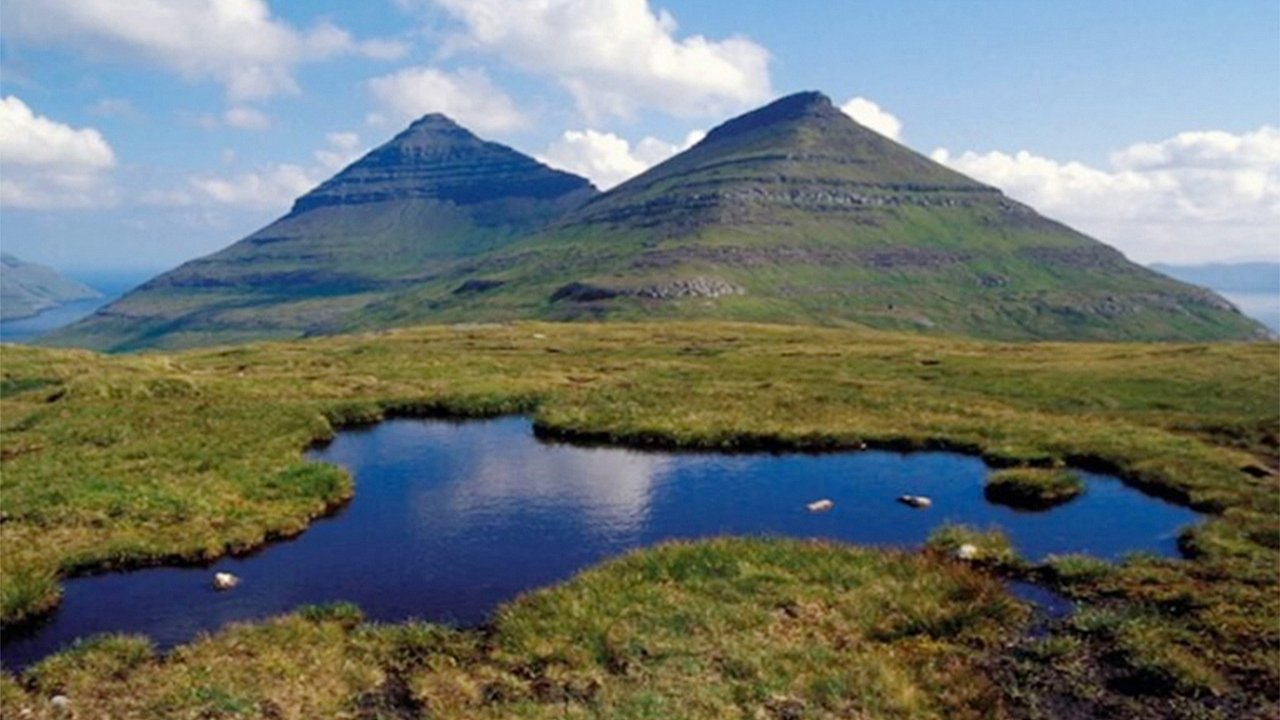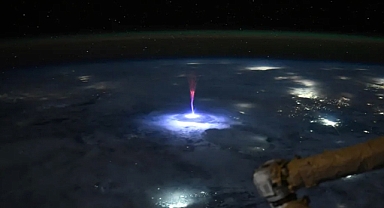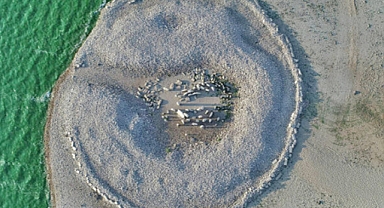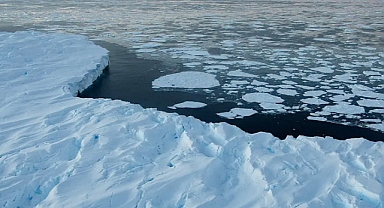This discovery hints at the existence of an ancient, advanced civilization in the region, reshaping our understanding of human history.A Mysterious Region
The Kola Peninsula, part of Russia's Murmansk area, spans approximately 100,000 square kilometers between the Barents and White Seas. With tundra to the north and taiga in the south, its chilly climate has long kept much of the area unexplored.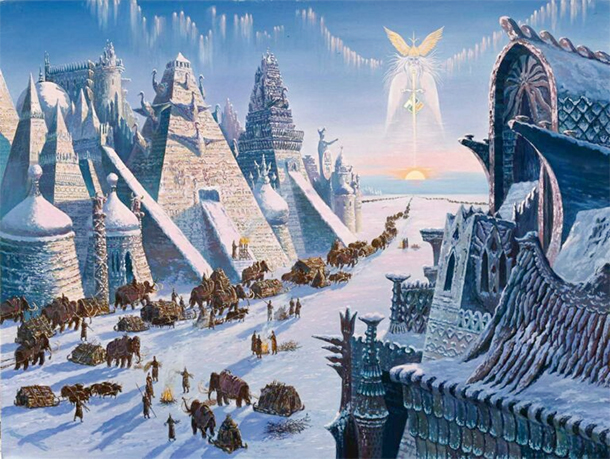 For centuries, myths and theories swirled around the Kola Peninsula, often associating it with the legendary land of Hyperborea, described by ancient Greek historians as a utopian land beyond the North Wind.Unearthing Ancient Monuments
For centuries, myths and theories swirled around the Kola Peninsula, often associating it with the legendary land of Hyperborea, described by ancient Greek historians as a utopian land beyond the North Wind.Unearthing Ancient Monuments
Initial exploration of the Kola pyramids began in the 1920s, led by Russian researcher Alexander Vasilyevich Barchenko. He hypothesized the structures were remnants of Hyperborea, an advanced civilization capable of remarkable feats such as flight, levitation, and harnessing atomic energy. Barchenko’s controversial theories and fascination with mysticism, however, overshadowed his findings, especially after his execution during the Great Purge in 1938.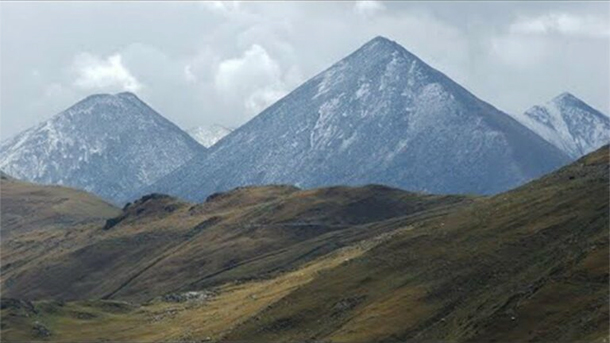 Renewed interest in these mysterious pyramids has since revealed new insights. The structures, possibly 9,000 to 40,000 years old, exhibit precise construction akin to the Egyptian pyramids. Researchers believe these formations might predate Göbekli Tepe, often regarded as the oldest temple complex.Insights from Modern Expeditions
Renewed interest in these mysterious pyramids has since revealed new insights. The structures, possibly 9,000 to 40,000 years old, exhibit precise construction akin to the Egyptian pyramids. Researchers believe these formations might predate Göbekli Tepe, often regarded as the oldest temple complex.Insights from Modern Expeditions
In 2007, a Russian team including experts from the Pulkovo Observatory and the Russian Academy of Natural Sciences revisited the pyramids. Equipped with advanced geophysical tools, they identified the structures as man-made, not natural formations. These pyramids, standing about 50 meters tall, are connected by a bridge and align perfectly with cardinal directions.The team also discovered gaps and hidden chambers within the pyramids, suggesting sophisticated engineering. Whether these served as astronomical observatories, sacred spaces, or something else remains unknown.The Myth of Hyperborea
Ancient Greek historians like Hecataeus of Miletus and Diodorus Siculus spoke of Hyperborea as a mystical land, abundant in resources and blessed with a temperate climate. According to Diodorus, it housed a magnificent circular temple dedicated to Apollo, whose priests were said to praise him continuously.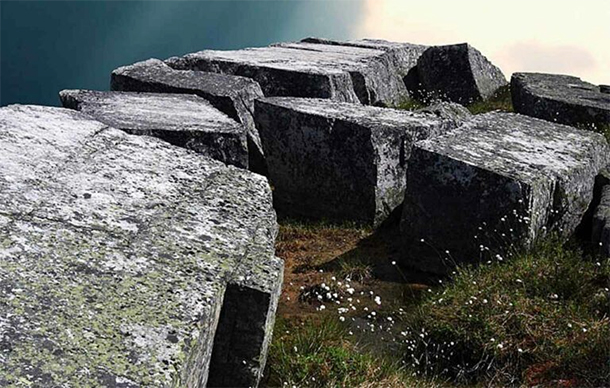 Could the Kola pyramids be linked to this mythical land? Some researchers theorize that Hyperborea’s remnants might still lie submerged or hidden in northern Russia.Ongoing Mysteries
Could the Kola pyramids be linked to this mythical land? Some researchers theorize that Hyperborea’s remnants might still lie submerged or hidden in northern Russia.Ongoing Mysteries
Despite extensive research, the exact origins and purpose of the Kola pyramids remain elusive. Are they evidence of a lost civilization with advanced knowledge, or are they natural formations misunderstood by early explorers? As more studies emerge, the Kola Peninsula continues to challenge historical narratives, offering a tantalizing glimpse into an ancient and enigmatic past.
The Kola Peninsula, part of Russia's Murmansk area, spans approximately 100,000 square kilometers between the Barents and White Seas. With tundra to the north and taiga in the south, its chilly climate has long kept much of the area unexplored.
 For centuries, myths and theories swirled around the Kola Peninsula, often associating it with the legendary land of Hyperborea, described by ancient Greek historians as a utopian land beyond the North Wind.Unearthing Ancient Monuments
For centuries, myths and theories swirled around the Kola Peninsula, often associating it with the legendary land of Hyperborea, described by ancient Greek historians as a utopian land beyond the North Wind.Unearthing Ancient MonumentsInitial exploration of the Kola pyramids began in the 1920s, led by Russian researcher Alexander Vasilyevich Barchenko. He hypothesized the structures were remnants of Hyperborea, an advanced civilization capable of remarkable feats such as flight, levitation, and harnessing atomic energy. Barchenko’s controversial theories and fascination with mysticism, however, overshadowed his findings, especially after his execution during the Great Purge in 1938.
 Renewed interest in these mysterious pyramids has since revealed new insights. The structures, possibly 9,000 to 40,000 years old, exhibit precise construction akin to the Egyptian pyramids. Researchers believe these formations might predate Göbekli Tepe, often regarded as the oldest temple complex.Insights from Modern Expeditions
Renewed interest in these mysterious pyramids has since revealed new insights. The structures, possibly 9,000 to 40,000 years old, exhibit precise construction akin to the Egyptian pyramids. Researchers believe these formations might predate Göbekli Tepe, often regarded as the oldest temple complex.Insights from Modern ExpeditionsIn 2007, a Russian team including experts from the Pulkovo Observatory and the Russian Academy of Natural Sciences revisited the pyramids. Equipped with advanced geophysical tools, they identified the structures as man-made, not natural formations. These pyramids, standing about 50 meters tall, are connected by a bridge and align perfectly with cardinal directions.The team also discovered gaps and hidden chambers within the pyramids, suggesting sophisticated engineering. Whether these served as astronomical observatories, sacred spaces, or something else remains unknown.The Myth of Hyperborea
Ancient Greek historians like Hecataeus of Miletus and Diodorus Siculus spoke of Hyperborea as a mystical land, abundant in resources and blessed with a temperate climate. According to Diodorus, it housed a magnificent circular temple dedicated to Apollo, whose priests were said to praise him continuously.
 Could the Kola pyramids be linked to this mythical land? Some researchers theorize that Hyperborea’s remnants might still lie submerged or hidden in northern Russia.Ongoing Mysteries
Could the Kola pyramids be linked to this mythical land? Some researchers theorize that Hyperborea’s remnants might still lie submerged or hidden in northern Russia.Ongoing MysteriesDespite extensive research, the exact origins and purpose of the Kola pyramids remain elusive. Are they evidence of a lost civilization with advanced knowledge, or are they natural formations misunderstood by early explorers? As more studies emerge, the Kola Peninsula continues to challenge historical narratives, offering a tantalizing glimpse into an ancient and enigmatic past.
